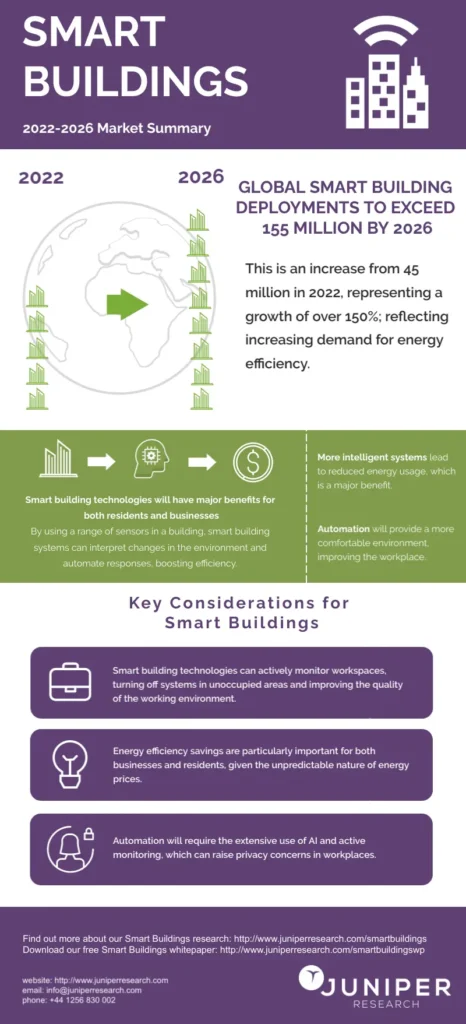Smart houses are being built everywhere. Some might even say smart is the In Thing these days. A new study, Smart Buildings: Key Opportunities, Competitor Leaderboard & Market Forecasts 2022-2026, from Juniper Research has found that the number of buildings globally deploying smart building technologies will reach 115 million in 2026, from 45 million in 2022. Juniper Research defines a smart building as a building that uses connectivity to enable economical use of resources, while creating a safe and comfortable environment for the occupants.

But if projections are right, residential “smart” is not the driver of the market. The research found that non-residential smart buildings will account for 90% of smart building spend globally in 2026; at a similar level to 2022. This dominance is due to the larger economies of scale in commercial premises, as well as the commercial focus of most smart building technologies.
Although the growth of more than 150% from 2022-2026 reflects increasing demand for energy efficiency from businesses and residents alike, as energy costs spike, Juniper found that by enabling buildings to monitor and automate common functions, significant efficiency gains can be made, while improving the environment for workers and residents. The report recommends that vendors focus on building analytics platforms for the most value from deployments.
The research found that the global shipments of sensors used in smart buildings will exceed 1 billion annually in 2026 from 360 million in 2022, representing a growth of 204%. Sensors, when combined with intelligent management platforms, will allow smart buildings to adapt to conditions; matching elements such as lighting, heating, and ventilation to living requirements. The report recommends that smart building vendors partner with artificial intelligence (AI) vendors to maximize the benefits of automation, such as reduced energy costs and improved working environments.
Want to tweet about this article? Use hashtags #construction #sustainability #IoT #AI #5G #cloud #edge #futureofwork


